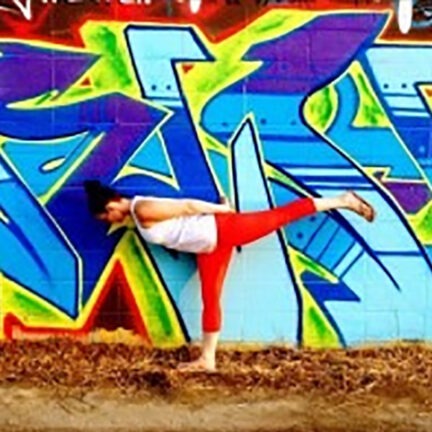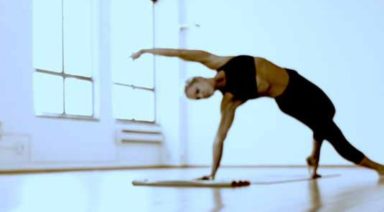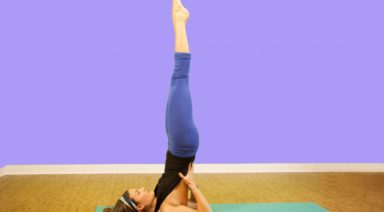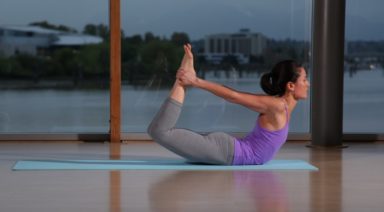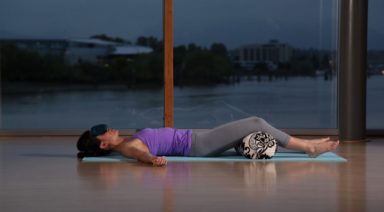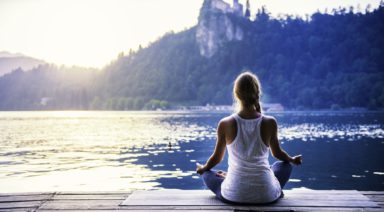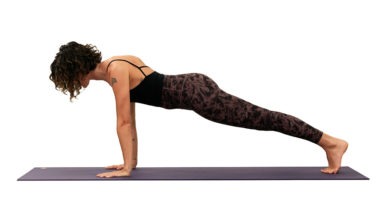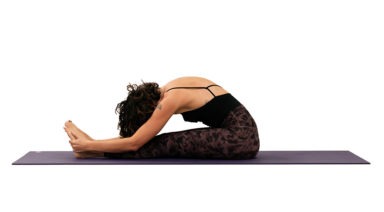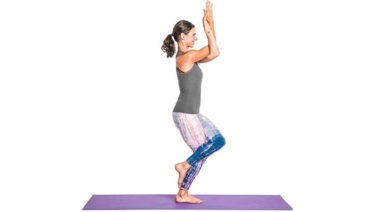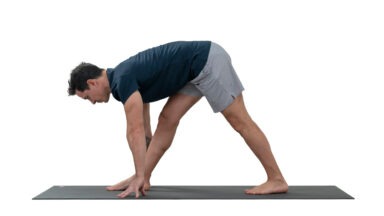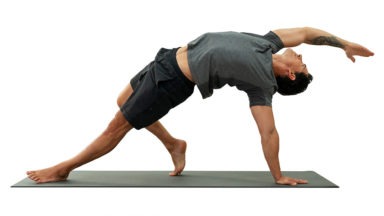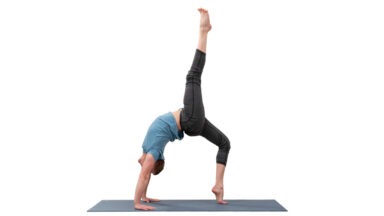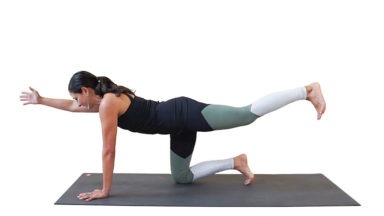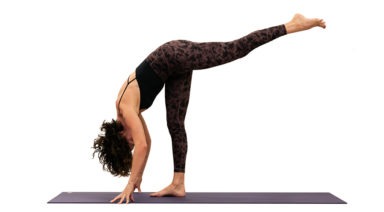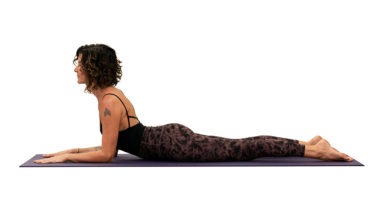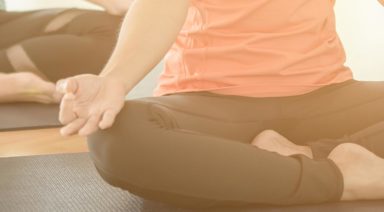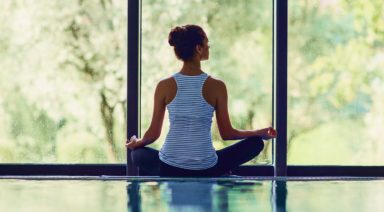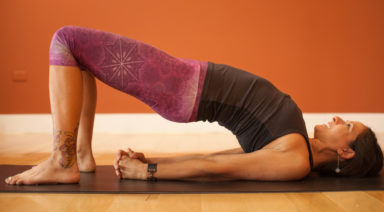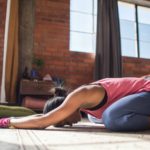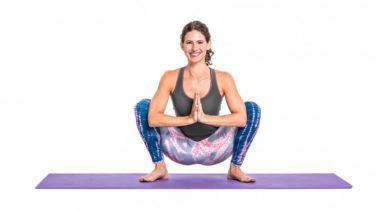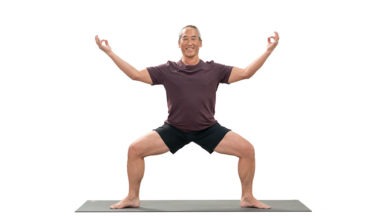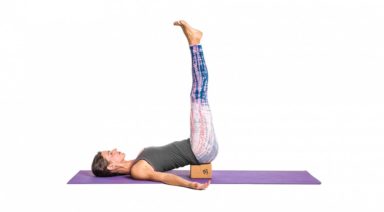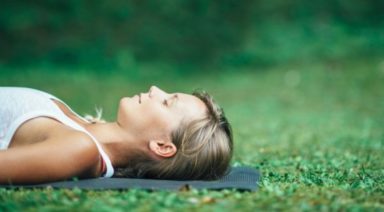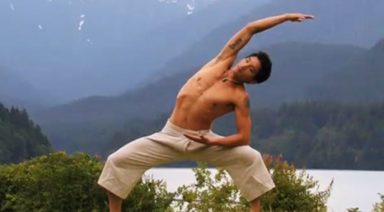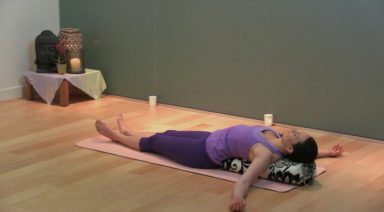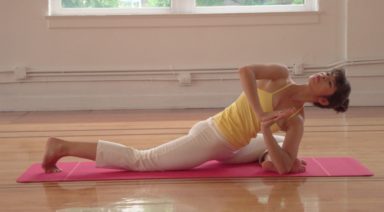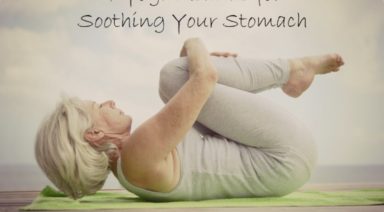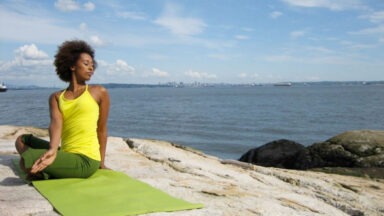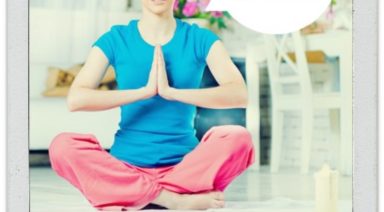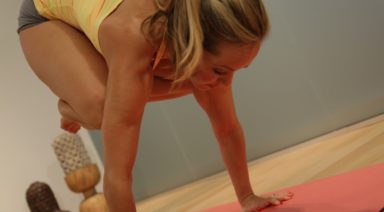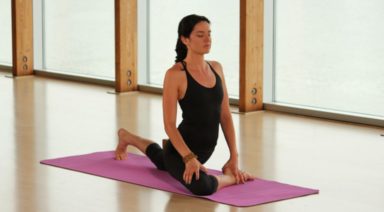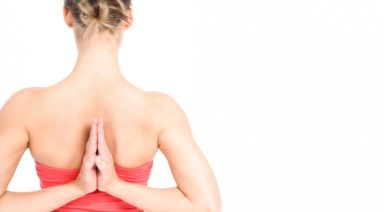4 Yoga Poses to Unlock Emotions
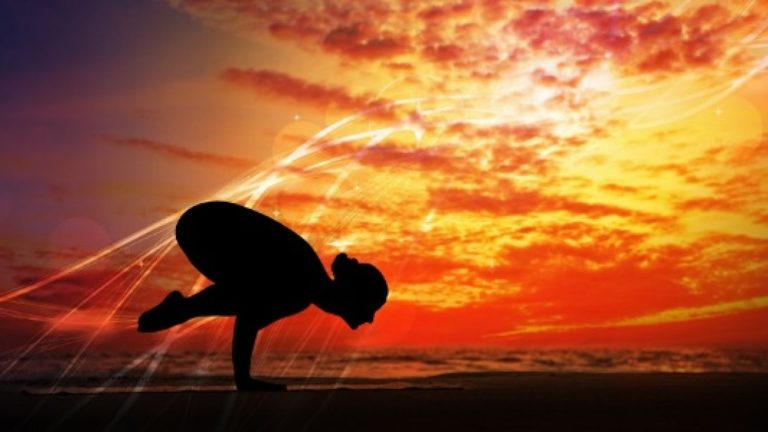
Have you ever felt upset without being able to clearly identify why? It’s not unusual for someone to struggle with identifying what exactly is concerning them.
You may need some time and space to process how you’re feeling and, what
- if anything – you want to do about it. If ignored, this type of disconnect from a person’s sense of self can cause stress, internal conflict and negatively effect relationships.
Breathing, meditation and taking time to slow down can often help provide clarity and a better connection to a person’s sense of self. You can find this through a regular yoga practice and incorporating the following four asanas into a sequence:
Pigeon (Eka Pada Rajakapotasana)
From downward facing dog, step the left knee through your center and towards your left wrist. Slowly drop the left leg down while moving the foot towards the right hip. Lower on to your mat, keeping both hips parallel. If this is uncomfortable, you can prop up the hip and pelvic muscles by placing a block or blanket under the left hip. Adjust the alignment on the back leg to ensure it’s not falling over to either side. It should be lengthening directly out of your hip rotator. If having the back leg straight is uncomfortable to you, keep a slight bend in the knee. The left foot can stay close to your hip, or if it’s available to you, you can gently extend it forward, keeping the foot flexed. Begin to fold forward and lower the torso to a height that is comfortable to you, maybe bending through the elbows and resting your forehead on the back on your hands.
Pigeon is a fabulous hip opener pose and engages your sacral (Swadhishthana) chakra. Hips are a part of the body where people often hold tension, especially women. Pigeon pose opens both the hip flexors (located on the front of your body) and the hip rotators (located on the back of your body). It can also help release tension in the lower back. In advance versions, a person can simultaneously practice shoulder and chest openers while in this pose.
The awakening of the sacral chakra in your lower belly will help connect you to your emotions, relationships and creativity. Take time in this pose to notice any sensations you feel in your body and breathe into those areas. Focusing on your breath, allow yourself to feel grounded and safe while in this pose. Let it serve as a reminder that everything will be alright.
Stay low and long in this pose for 10-20 breaths on each side.
Wheel Pose (Urdhva Dhanurasana)
Lying on your back, bend your knees with the soles of your feet flat on the mat and inch your heels a little closer to your hips. Take your hands behind your head, bend through the elbows and place the palms of the hands on the mat, directly under the shoulders, fingertips facing towards your body. Lift the hips as you press into your hands and feet. Press through the upper thighs as you shine your heart upwards.
The Wheel pose is great for allowing yourself to feel vulnerable as it awakens your heart (Anahata) chakra. Releasing the neck and dropping the gaze in this pose will help you to see things differently, maybe give you a new perspective on life. It is especially helpful while mending a broken heart and will encourage you to fill yourself with love, gratitude and appreciation.
Remember to breathe slowly and deeply as your lungs naturally begin to work harder for you. Feel your chest expand and heart soar.
For a less intense variation, enter your Mini Bridge pose.
Work your way up to staying in wheel pose for a minute at a time, for up to three times.
Wisdom Pose (Balasana)
Kneeling on your mat, bring your knees together and sit your bum back your heels. Fold your chest over your thighs and relax your neck, dropping your gaze down and closing the eyes. Place your arms down and back by your side, palms facing up, and release into your shoulders.
This variation of Child’s Pose offers all the same benefits that Child’s does, including balancing your sacral (Swadhishthana) chakra, but this variation allows the shoulders to relax a little bit deeper. It also allows more openness to your thoughts as your stretch the crown of your head towards the front of your mat, inviting your crown (Sahasrara) chakra to open. While resting in this humble and still pose, notice thoughts as they come and go, inviting wisdom and creativity.
If performed with an open mind, the full-body, gravitational pull of Balasana can induce a great sense of physical, mental and emotional release.
Continue to deepen the breath and hold for about a minute.
Supported Corpse (Salamba Savasana)
Take a bolster or roll up a blanket and tuck it under your knees. Lay flat out on your back, on your mat, letting your feet flop open to your sides and hands resting down by your sides, palms facing up. Feel a soft release into the lower spine. Close the eyes, and begin to focus on the natural rhythm of your breath.
This pose will help you relieve stress and bring peace to the mind. Your body should feel relaxed as you take your practice inwards, silently experiencing gratitude and acceptance. If you find tears streaming down your face, let them fall. This is a relaxing and releasing pose – both physically and mentally.
It is suggested a person stay in this pose five minutes for every 30 minutes of practice.
Practice these asanas in your own way, noticing what’s right for you and your body. Become aware of how you feel in them and let your natural energy guide you to your answers. You may be surprised at what surfaces when you can unlock your emotions through the practice of yoga.
When Things Get Turned Upside Down: Yoga Inversions
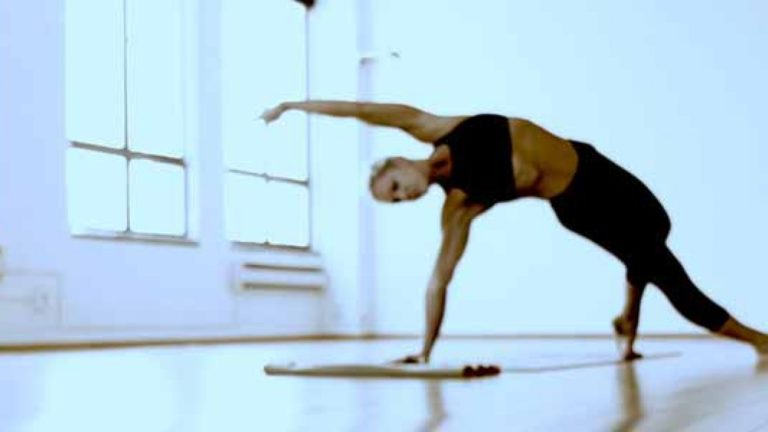
You’re never more alive than when things get turned upside down.
::Malcolm Gladwell
Whether misjudging a headstand and crashing to the floor, fired from our job just when we thought we were up for a promotion or dumped after posting “in a relationship” on our social media status for all to see, nothing gets our attention like being confronted by the unexpected. Suddenly, we find ourselves in a surprising new landscape for which we weren’t prepared. We’re staring down change and wrestling with the fear that we might fall again.
The truth is we’re guaranteed to fall again…and again. Like crashing waves, challenges will crest and crumble whether we’re talking about our headstands or our lives. Personally I’ve fallen many times, certainly out of my headstand, but ultimately into a new headspace.
Inversions in Yoga
To me, inversions are a fantastic living laboratory where we can embrace and move beyond things like fear, expectation, and impatience. All at once upside down needs to become right side up, and we have to surrender our tight grip on what we think we can control. We feel tangible postural balance merge with something deeper.
Inversions are an amazing reminder that how we do one thing is how we do everything. They reveal to us that often things are not going to go as we’d planned, but they just might turn out even better that way.
Making the Leap
Starting a new job or relationship is like the leap of faith it takes to turn upside down in a handstand. Though initially our jump may resemble a first handstand in an unfortunate bra, revealing things we had not hoped for…we learn as we go. Frankly, sometimes the catalysts for our evolution are pretty tits-out, upside down. But, if we move through our raw initiation and prove to ourselves a little at a time that we can do it, before you know it, whatever we were attempting becomes an important part of our personal fabric.
When we try too desperately to control the things we can’t, we become tightly wound in lopsided ways that stunt our growth and leave us miserable.
If we litter our inversions or our lives with expectation, we pin ourselves underneath frustration and impatience, which, in turn, erode the courage and humility it takes to try again.
Outcomes Are Not Guaranteed
The bottom line is we can’t control a guaranteed outcome. Even Kino MacGregor and Doug Swenson have days when they can’t balance in their handstand (albeit annoyingly infrequently). And for all of us, life can feel out of control and out of balance sometimes when it comes to work, deadlines, responsibilities, Trader Joe’s Dark Chocolate Covered Almonds, time wasted down the rabbit hole of Facebook…you name it.
The Yoga Sutras
In Patanjali’s Yoga Sutras, abhyasa (perseverant practice) and vairagya (surrendering without expectation of a particular outcome) demand that we resist the trappings of instant gratification our modern society seems to promote. And Pattabhi Jois, the father of Ashtanga yoga, stated,
Do your practice and all is coming.
He didn’t say, “Do your practice and kurmasana (flipping your feet behind your head) is coming instantly.” Nor did he promise results like millions of dollars and six-pack abs. We have to allow incremental progress to eclipse our need to accomplish the finished product. As Ralph Waldo Emerson so famously put it,
Life is a journey not a destination.
What We Can Control
There is one thing we can control, however, and that’s the accountability and integrity with which we show up — on our mat, at our job, for ourselves and for one another. Abhyasa and vairagya ask us to see balance and progress not as a single handstand, but as a part of a larger personal pilgrimage (sadhana). When we look at things through a wider lens, we can see every wobble, challenge and fall as an opportunity to learn and grow. Each time we glean a little bit more wisdom to bring to our next inversion or adventure. And as we do, we start to see that we’re never more alive than when things get turned upside down.

